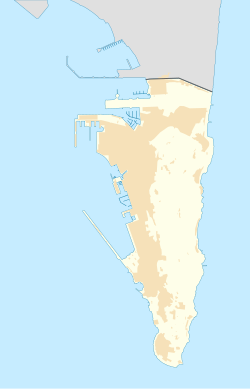Larger shipwrecks shown
A list of shipwrecks of Gibraltar. The vast majority of the shipwrecks are located near the west coast in or just outside the Gibraltar harbour area within the Bay of Gibraltar. In addition to the ships there are other items of interest on the seabed in the vicinity. Off the end of Europa Point there is said to be a large number of Roman and Phoenician anchors. Other items appear to have been dumped. In one case there are two Sherman tanks on the eastern side and two piles of rusting cannons on the west. [1]
